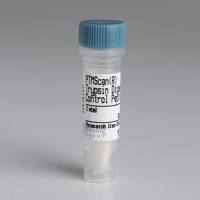Proteomic Methods for Biomarker Discovery in a Rat Model of Alcohol Steatosis
互联网
252
Understanding changes in the expression of specific proteins and/or alterations in their posttranslational modifications is crucial to elucidating the molecular mechanisms underlying disease states such as alcoholic liver disease. Protein separation and analysis techniques such as two-dimensional electrophoresis and mass spectrometry can be used for identifying biomarker proteins that are altered during progression of alcoholic liver disease. In this chapter, we outline methods for resolving liver tissue proteins from a rodent model of alcoholic liver disease using two-dimensional electrophoresis and identifying differentially expressed proteins using mass spectrometry. In addition, since oxidative stress strongly correlates with alcoholic liver disease, we also describe methods for identifying oxidatively modified proteins from liver tissue. We specifically focus on identifying proteins that are carbonylated as protein carbonylation is a permanent modification and considered deleterious to cells. The combination of two-dimensional electrophoresis for protein resolution, mass spectrometry for protein identification, and affinity-based methods for enriching and identifying carbonylated proteins is a powerful methodology for protein biomarker identification.








